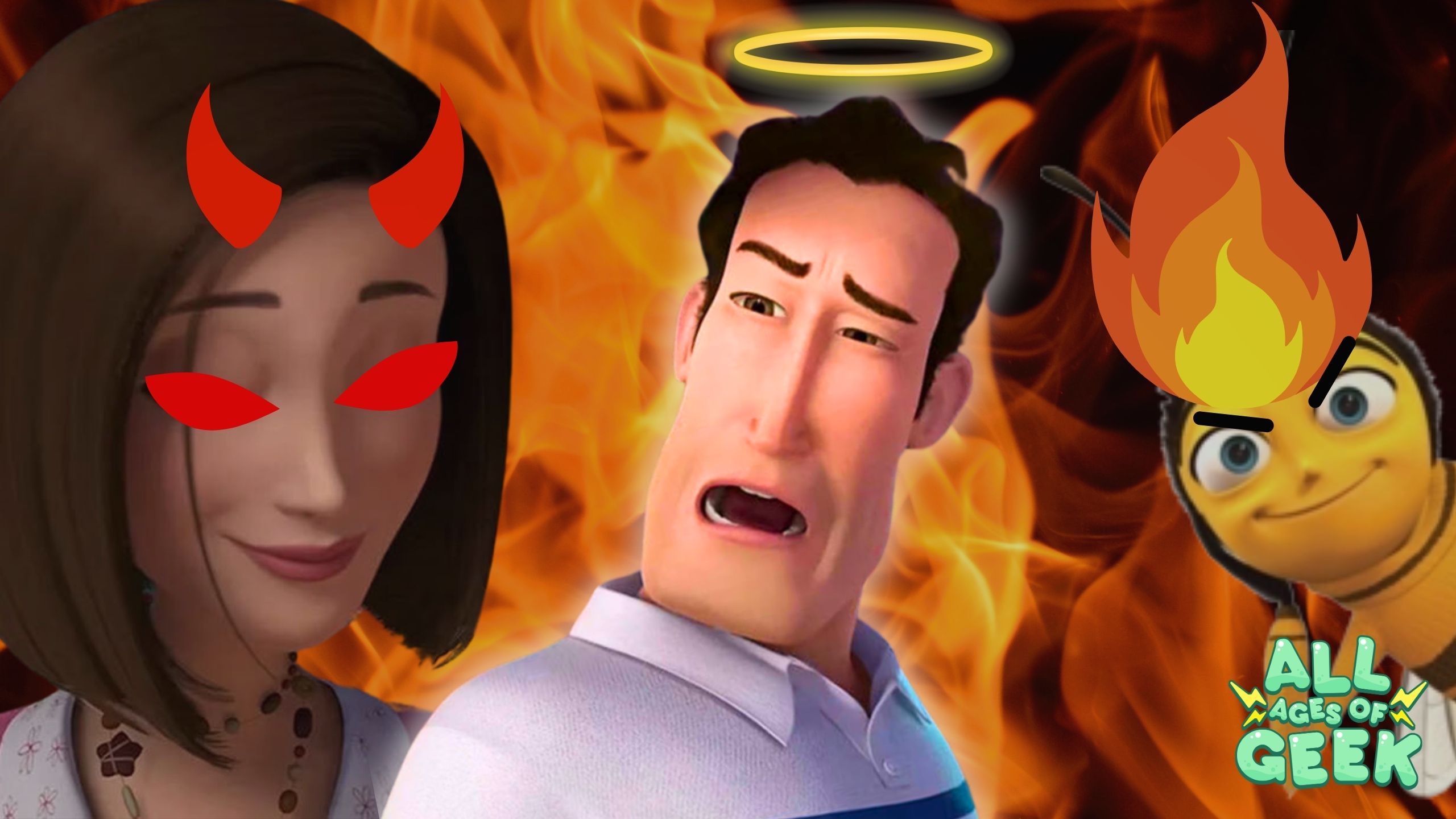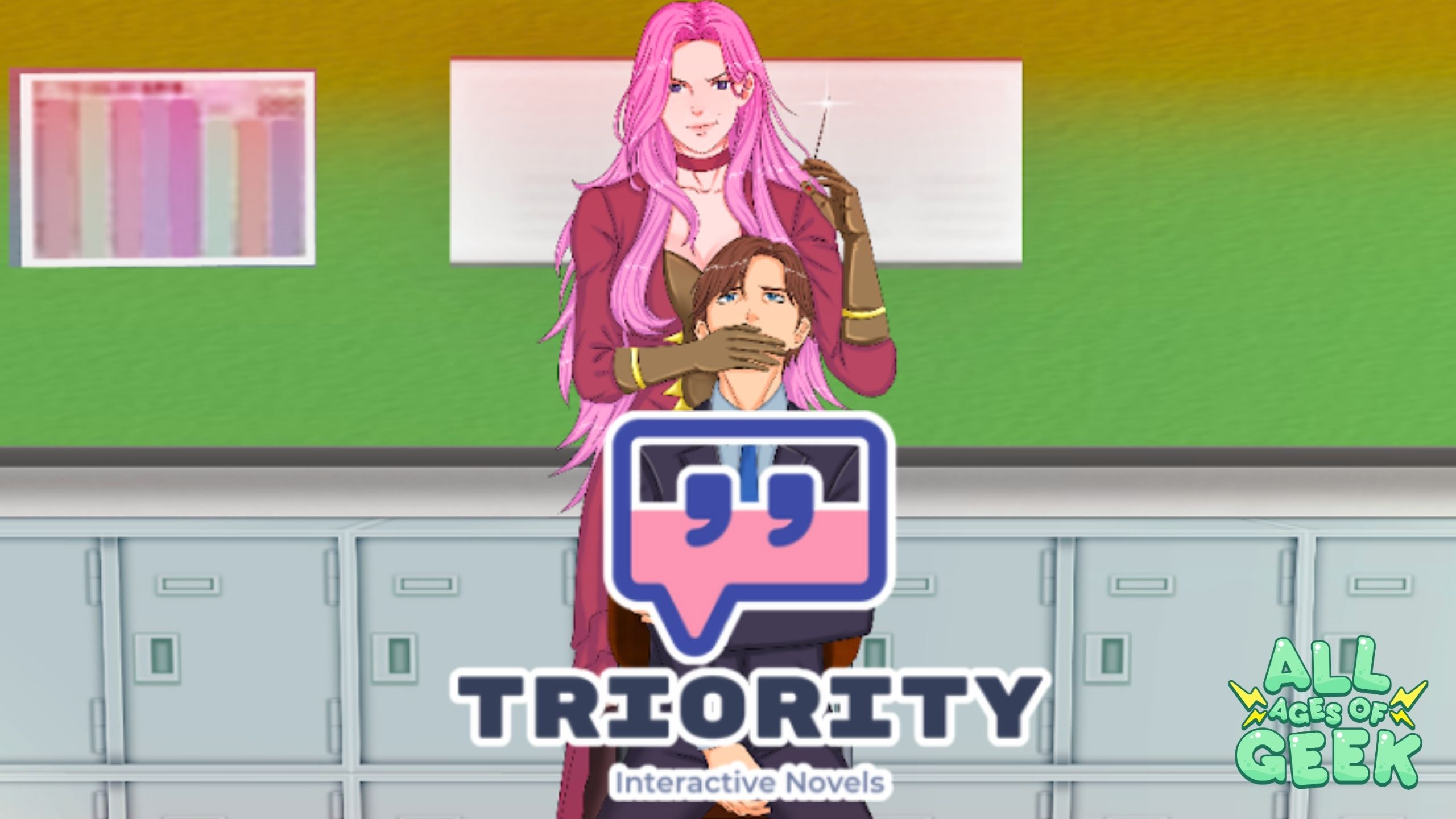by: Gen/Esis
Sword Art Online Progressive: Scherzo of Deep Night, is the sequel to the brilliantly made Aria of a Starless Night. Like its predecessor, the name continues the music naming convention—a scherzo meaning a fast, upbeat, sometimes comical piece of classical music. Not something that makes it immediately clear what the name means in the context of the movie, but with new elements being put into play in the world of Aincrad, what (or who) that’s referring to starts to make a little more sense.
Once again, as resident SAO expert, I need to clarify a few things about this story. While the first movie, Aria of a Starless Night, covered the first arc of the Progressive series, Scherzo of Deep Night doesn’t follow the second one. In fact, it covers the fifth arc of the Progressive series. Because of this, we have four arcs worth of content that are skipped, so this movie has a lot to do to catch the viewer up to speed. All of which I will touch upon here.
Well, let’s get to the review:
I have a lot to say story-wise, so I’ll start off by mentioning the visuals. While the movie looks great and the animation is at times spectacular, it’s evident that this movie had a lot less time to cook compared to the first one. It doesn’t look bad by any stretch of the imagination, but to me, it felt like a really well-animated episode of a series rather than movie-level quality.
It especially didn’t help that the CGI in this film wasn’t as well implemented into the scenes as it could’ve been. While a lot of the CGI near the end didn’t look too bad, the animation of said CGI is what suffered a bit more in that case. Of course, none of that is so distracting that it takes away from the overall film, but adding that on top of the rest of the, albeit great, lack of movie-level visuals, this movie doesn’t feel as impactful or pretty as the first.
The music, although still great, also didn’t stand out much. It blended in with the scenes just fine, but the tracks weren’t so great that they elevated the scenes. (Although, do keep in mind that my theater’s sound system didn’t seem to great, so that might just be an issue with that )
Certain scenes, however, had beautiful shots that portrayed the ruin-filled floor 5. While it’s unfortunate we didn’t get to see much of it, the things we did get looked stunning.
I’ll also add that the voice actors did a fantastic job here. Yoshitugu Matsuoka & Haruka Tomasu once again killed it in their roles. Everyone else also did a splendid job. There wasn’t a character who I felt was weak in the VA department.
Now, let’s get into the story.
Scherzo of Deep Night is the story of floor 5, one of the milestone floors and a culmination of everything up till now. As the climax of four arcs worth of development, it’s one of the more powerful stories in Progressive up till now—unfortunately, that’s not so much true for the movie.
As I’ve mentioned before, this movie comes right after the adaptation of floor 1, meaning there is no culmination of anything here.
The first immediate issue comes in the terms of exposition. Because of the aforementioned lack of arcs, this movie has a lot of heavy lifting to do when it comes to setting up the events that take place in this movie. This means we have to waste time explaining things that should’ve been naturally revealed throughout the entire Progressive series instead of exposition dumps. This leaves less time for the actual story to occur and gives less emotional weight to any character that isn’t the immediate main cast.
Pacing-wise, the movie seems to struggle fitting events in a timely manner. Scenes that should hold weight feel rushed, and characters that should be important feel like random unimportant characters—that’s because, in this movie, they are.
The focus of this movie was decided to be on the relationship between Asuna and Kirito. That in itself isn’t a bad call. Due to the cut content, they couldn’t adapt this arc faithfully anyway, so going this route gave it a good anchor point. Unfortunately, by the point we see these two characters again, most of the development that brought them closer has already passed. Meaning that all we are seeing is where they are now in their relationship which, if you’re coming off watching the first movie, their closeness might feel sudden.
But of course, if you ignore that aspect and look at it strictly for what it is at that moment, the slower, softer moments between Kirito and Asuna are among some of the best you can get. Progressive as a whole tends to have their relationship as a main draw, and this movie incorporates that to the fullest.
Although sometimes subtle, the movie also encapsulates some of the mechanics that the novels showed off in a way that didn’t feel daunting and flowed perfectly with the story. From how mobs work to status ailments, and even the boss fight felt a lot more video game-like. That is something the anime tends to drift away from so seeing it done here is—and well—is praiseworthy in my eyes. (Even if they did cut most of the quests that appeared in the novel)
The guilds inside SAO are another large subject of this arc and movie, one that I feel suffers from the lack of time.
A lot of the tension between the groups are things that are mentioned to have been occurring ever since the guilds were created after floor 1, but due to the fact we don’t get to see it happen, we don’t have much to base that off of except the animosity the leaders show to each other and people’s word. Because of this, you don’t ever feel any real tension between the guilds and, since that is a big plot point for the overall story, makes that aspect one of the weaker ones in the story.
The same goes for Kirito.
There haven’t been many examples throughout the first two progressive movies that the guilds treat Kirito badly compared to many other players, which is a core aspect of not only the story, but also his character.
About every character in this story had their stories weakened due to time constraints, but only one has had little done wrong with them, and that is Mito.
Mito, due to her being an anime-original character, could easily be written off during the events of floors two, three, and four. Because of this, her appearance here has little baggage with it. Her character picks up right where it left off in the first movie and we get to see some resolution with it.
While she is much weaker character-wise in this movie than in the first, her character is the most consistent between the movies. Although to be entirely fair, her being in the movie didn’t necessarily have to have happened and in fact took away from other characters—as in, she replaced certain characters from the novels.
If I was asked if I’d recommend this movie, I’d say yes—but only if you’re a fan of the series and either haven’t read the novels or aren’t as biased towards them as me. As a standalone project, it works for what it wants to be. You won’t have a bad time and there’s nothing absolutely bogging the movie down. To say that I went to the theatre with someone who doesn’t necessarily love SAO and even they enjoyed it (more than me even) should say something.
Overall Score: 6/10
Alright, usually I’d end it there, but I wanted to add something extra. Bonus content—if you will. It’s a small segment I like to call:
—Novel Reader Complains About Pointless Things—
(Massive Spoiler Warning!)
Okay, look, I’m not going to say I don’t like to complain, because I do, but the movie really went all out on not adapting the novel’s strongest aspects in any way (Except for some of the Kirito & Asuna moments).
Asuna’s character, in my opinion, suffers the most here.
In the novel, a huge chunk of it revolved around her realizing that she needs to start to become independent from Kirito. She notices that she keeps leaning on him for everything and needs him to help her at every turn and she wants to change that. It’s through those actions that she gets herself into trouble and eventually ends up learning about the Laughing Coffin ploy to force the guilds apart.
The movie removes a lot of this individuality and makes it seem like just your usual Kirito and Asuna go do something, Asuna gets in trouble, and while Kirito is trying to save her, she just happens to learn that information.
While in the end, she ends up relying on Kirito again, this is where that goal of wanting to become strong enough to be on par with him is really born—and on the other hand, Kirito also gets, or really realizes, a goal for himself.
Kirito’s part in all of this is included in the movie, but it feels much shallower compared to the novel. It’s basically here that Kirito realizes that his true goal at the moment is to build Asuna up to be, essentially, stronger than him. Or at least strong enough for her to stand on her own.
Liten and Shivata are practically canned in the movie adaptation.
In the novels, you are thoroughly introduced to them and you truly feel the relationship they’ve formed through the death game. It’s through them that you get a Romeo & Juliet type of dynamic that feels real and makes you care about these characters pretty early on. At the very least, they make you care enough so when Shivata is almost killed, you truly fear for his life—a scene that the movie replaced with Asuna instead.
Now, I don’t think I need to explain why that’s a bad call, but I’ll do it anyway.
We know for a fact Asuna survives till the end. There is no issue there. Liten and Shivata on the other hand, their fates are up in the air. Plus, you know that if one of them dies the other will be heartbroken. There’re stakes there. At least more than putting Asuna in that same scene.
But worst of all, and one of the things I was hoping wouldn’t get ruined, is the scene after the boss fight where Asuna comforts Kirito.
I knew from the get-go the scene wouldn’t be as powerful due to the other cut content, but this adaptation did a poor job the even encapsulate that scene and make there be that emotion from the novel. The way it was shot, the lack of Kirito’s thoughts, and his weak show of emotion, all of that hinder the scene more than it should’ve.
Asuna’s reaction, I felt, was perfect. Crying without looking sad at first, that worked phenomenally well, but it’s Kirito’s side of things that really didn’t land.
Anyway, I have a lot more to complain about—kind of how Morte’s character falls absolutely flat due to having zero context for his existence or his feuds with Kirito—but I rather just leave it there.
At the very least, Argo wasn’t cut from the movie this time—and she even received more scenes that she had in the novel. That alone almost makes up for the other cuts…almost.
(Also, the Scherzo part of the arc name refers to Laughing Coffin)
—End of pointless complaining—










